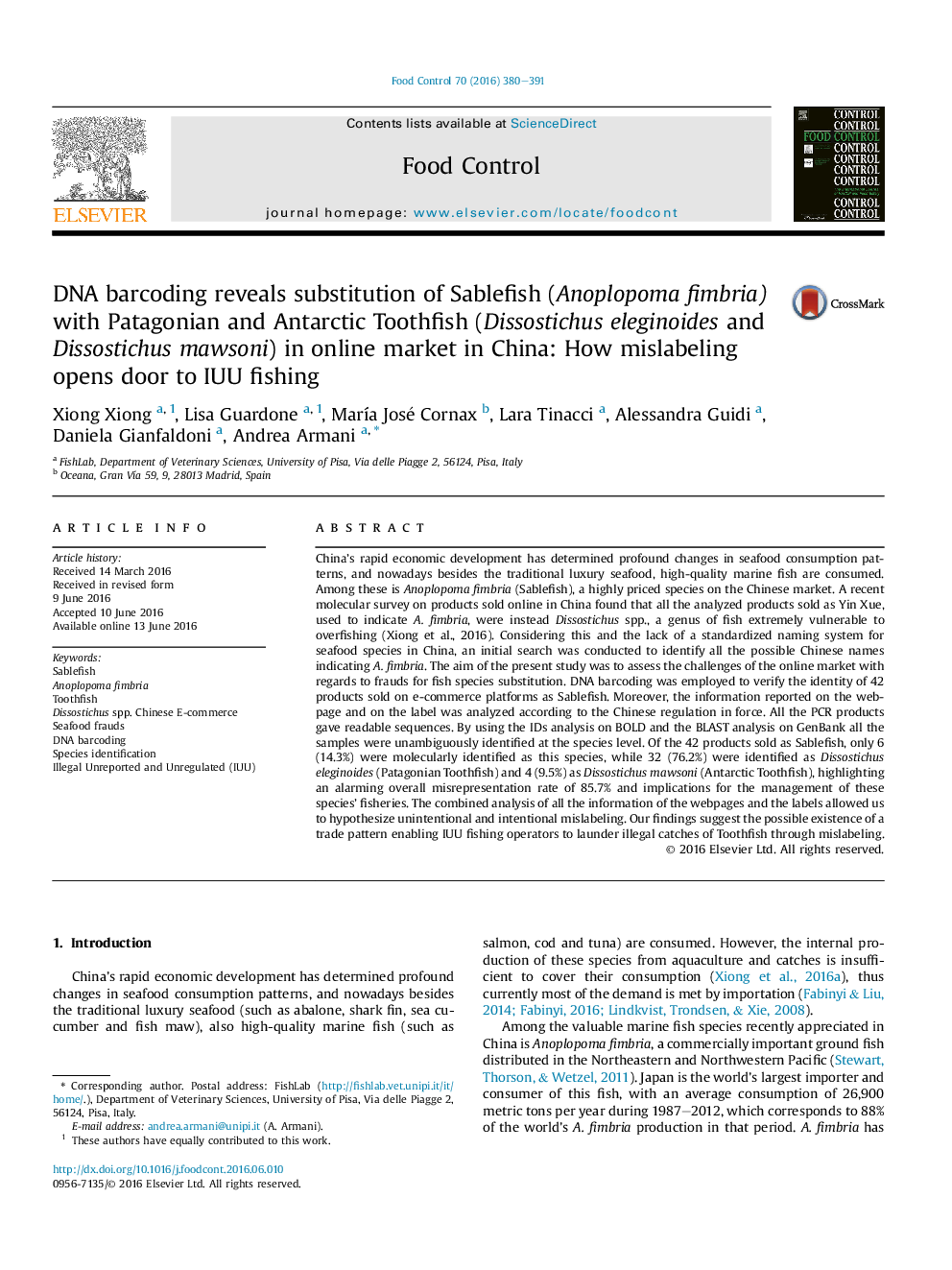| کد مقاله | کد نشریه | سال انتشار | مقاله انگلیسی | نسخه تمام متن |
|---|---|---|---|---|
| 4559009 | 1628392 | 2016 | 12 صفحه PDF | دانلود رایگان |

• Products sold online as Yin Xue (Chinese pinyin for Sablefish) in China were collected.
• DNA barcoding revealed an alarming overall misrepresentation rate of 85.7%.
• Sablefish was found to be substituted with Patagonian and Antarctic Toothfish.
• Voluntary and involuntary mislabeling have been hypothesized.
• Implications for Toothfish conservation have been discussed.
China’s rapid economic development has determined profound changes in seafood consumption patterns, and nowadays besides the traditional luxury seafood, high-quality marine fish are consumed. Among these is Anoplopoma fimbria (Sablefish), a highly priced species on the Chinese market. A recent molecular survey on products sold online in China found that all the analyzed products sold as Yin Xue, used to indicate A. fimbria, were instead Dissostichus spp., a genus of fish extremely vulnerable to overfishing (Xiong et al., 2016). Considering this and the lack of a standardized naming system for seafood species in China, an initial search was conducted to identify all the possible Chinese names indicating A. fimbria. The aim of the present study was to assess the challenges of the online market with regards to frauds for fish species substitution. DNA barcoding was employed to verify the identity of 42 products sold on e-commerce platforms as Sablefish. Moreover, the information reported on the webpage and on the label was analyzed according to the Chinese regulation in force. All the PCR products gave readable sequences. By using the IDs analysis on BOLD and the BLAST analysis on GenBank all the samples were unambiguously identified at the species level. Of the 42 products sold as Sablefish, only 6 (14.3%) were molecularly identified as this species, while 32 (76.2%) were identified as Dissostichus eleginoides (Patagonian Toothfish) and 4 (9.5%) as Dissostichus mawsoni (Antarctic Toothfish), highlighting an alarming overall misrepresentation rate of 85.7% and implications for the management of these species’ fisheries. The combined analysis of all the information of the webpages and the labels allowed us to hypothesize unintentional and intentional mislabeling. Our findings suggest the possible existence of a trade pattern enabling IUU fishing operators to launder illegal catches of Toothfish through mislabeling.
Journal: Food Control - Volume 70, December 2016, Pages 380–391